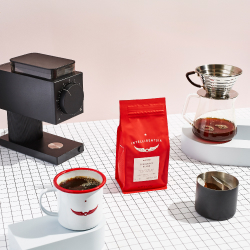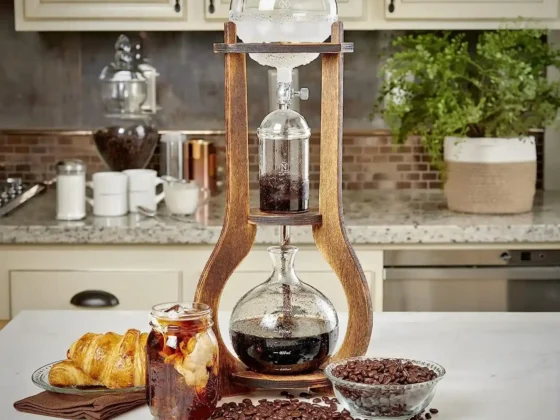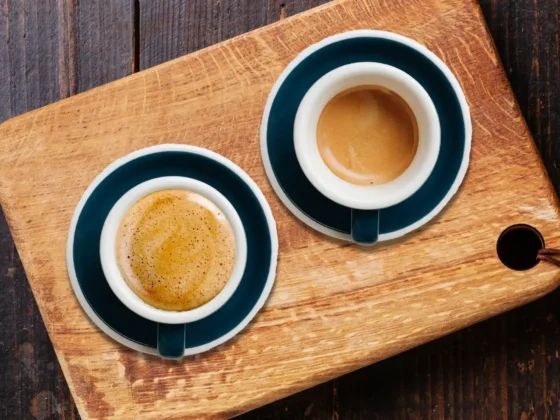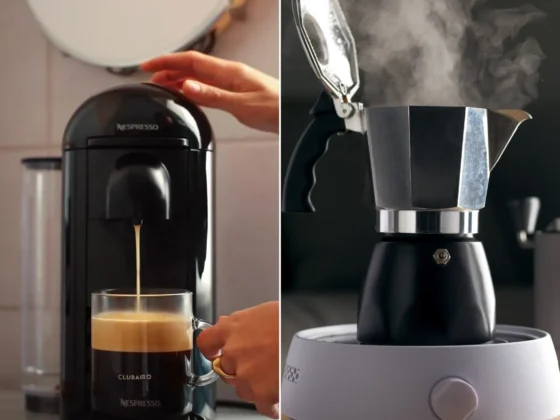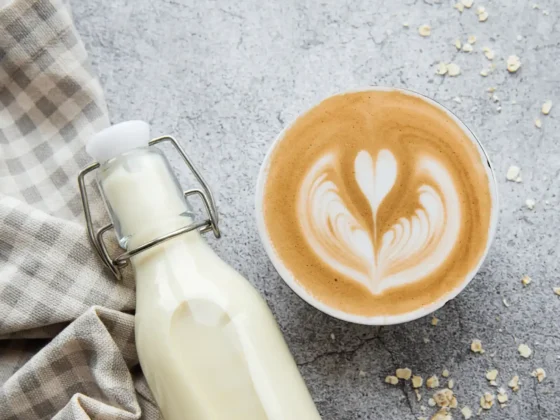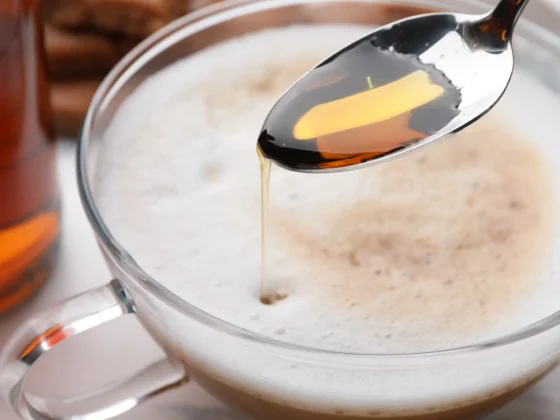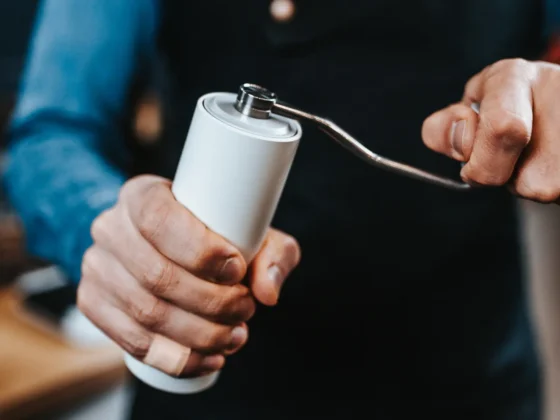At the heart of coffee shops around the globe lies a debate that has stirred conversations among baristas, coffee enthusiasts, and casual drinkers alike. Delving into the world of coffee means exploring an array of flavors, techniques, and traditions. Central to this exploration is understanding the distinction and allure of two iconic brews: espresso and cappuccino. As we embark on this journey to unravel their nuances, let’s dive deep into the espresso vs cappuccino debate, celebrating their unique attributes and the culture they encapsulate.
Skip the reading and opt for the article’s audio rendition instead.
- Introduction & Key Takeaway
- https://app.mysoundwise.com/tracks/16977503430013647e.mp3
- Espresso vs Cappuccino: The Origins and Basics
- https://app.mysoundwise.com/tracks/16977505061217144e.mp3
- Flavor Profiles and Variations
- https://app.mysoundwise.com/tracks/16977510978959763e.mp3
- Serving Styles and Presentation
- https://app.mysoundwise.com/tracks/16977512658634304e.mp3
- Nutritional Aspects and Caffeine
- https://app.mysoundwise.com/tracks/16977513109730923e.mp3
- The Coffee Culture and Trends
- https://app.mysoundwise.com/tracks/16977513554465896e.mp3
- Conclusion & FAQs
- https://app.mysoundwise.com/tracks/16977518020113516e.mp3
Cappuccino vs Espresso: Key Takeaway
- Foundational Differences: Espresso and cappuccino are both derived from coffee beans, but their preparation methods set them apart. Espresso is a concentrated coffee brew, while cappuccino combines this intensity with the creaminess of steamed milk and foam.
- Cultural Significance: Both beverages have rich histories rooted in Italian coffee culture. Espresso is cherished for its purity and strength, whereas cappuccino is celebrated for its artful presentation and balanced flavor.
- Connoisseurs’ Perspective: For coffee aficionados, the preference between these two beverages goes beyond taste. It delves into the appreciation of coffee’s nuances, its preparation rituals, and the quality of beans used.
- Customization and Varieties: While espresso serves as the base for many coffee drinks, cappuccino offers a canvas for innovation, allowing for a range of flavor infusions, milk alternatives, and garnishing techniques.
- Broader Coffee Culture: The debate over these delectable coffee drinks encapsulates the larger dialogue about coffee preferences, brewing techniques, and the global trends shaping the coffee industry. Both beverages symbolize the diversity and richness of the coffee world.
Espresso vs Cappuccino: The Origins and Basics
Both beverages have long-standing traditions and specific techniques of preparation. Originating from the same bean, these beverages differ in texture, preparation, and taste. This divergence gives each a unique place in the vast world of coffee.
What is Espresso? – The Essence of Coffee
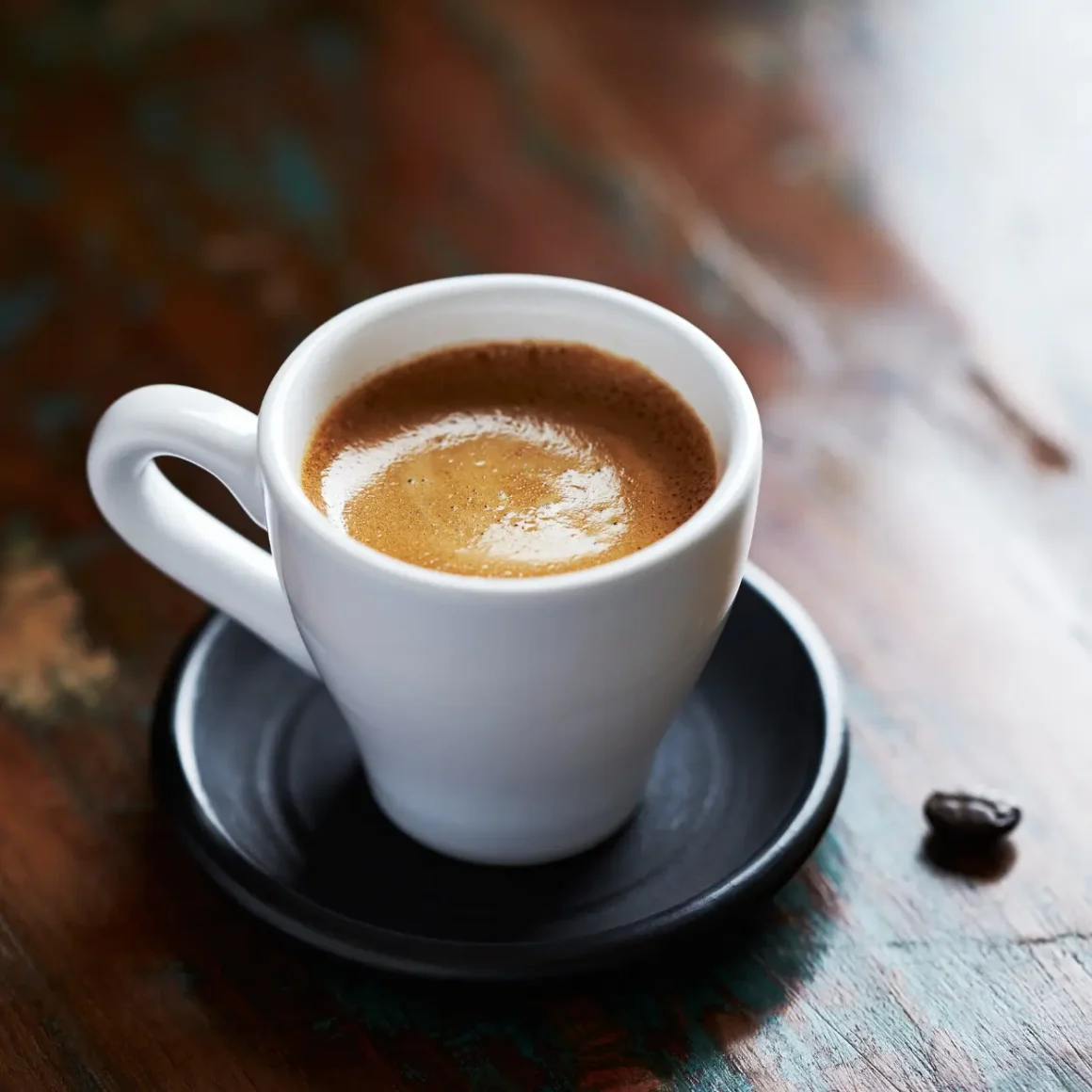
Diving deep into the rich tapestry of coffee, espresso emerges as its purest representation. This intense brew, originating from Italy’s vibrant coffee scene, has captivated palates worldwide with its unique preparation and robust flavor.
- Origins: Espresso coffee, encapsulating the heart of the coffee world, has its roots in Italy. Developed in the late 19th century, it was designed as a faster way to serve a robust coffee shot, aligning with the pace of the burgeoning urban life.
- Basics: This delightful beverage is essentially a concentrated coffee shot. It’s achieved by pushing hot water through tightly packed, finely ground coffee beans. The result is a dense, robust brew topped with a distinctive layer known as crema. (1)
- Taste and Texture: The concentrated nature of espresso coffee gives it a bold and full-bodied flavor. The presence of crema on top, a golden creamy froth, is a hallmark of a well-made espresso, adding to its taste and aesthetics.
What is a Cappuccino? – A Creamy Italian Classic
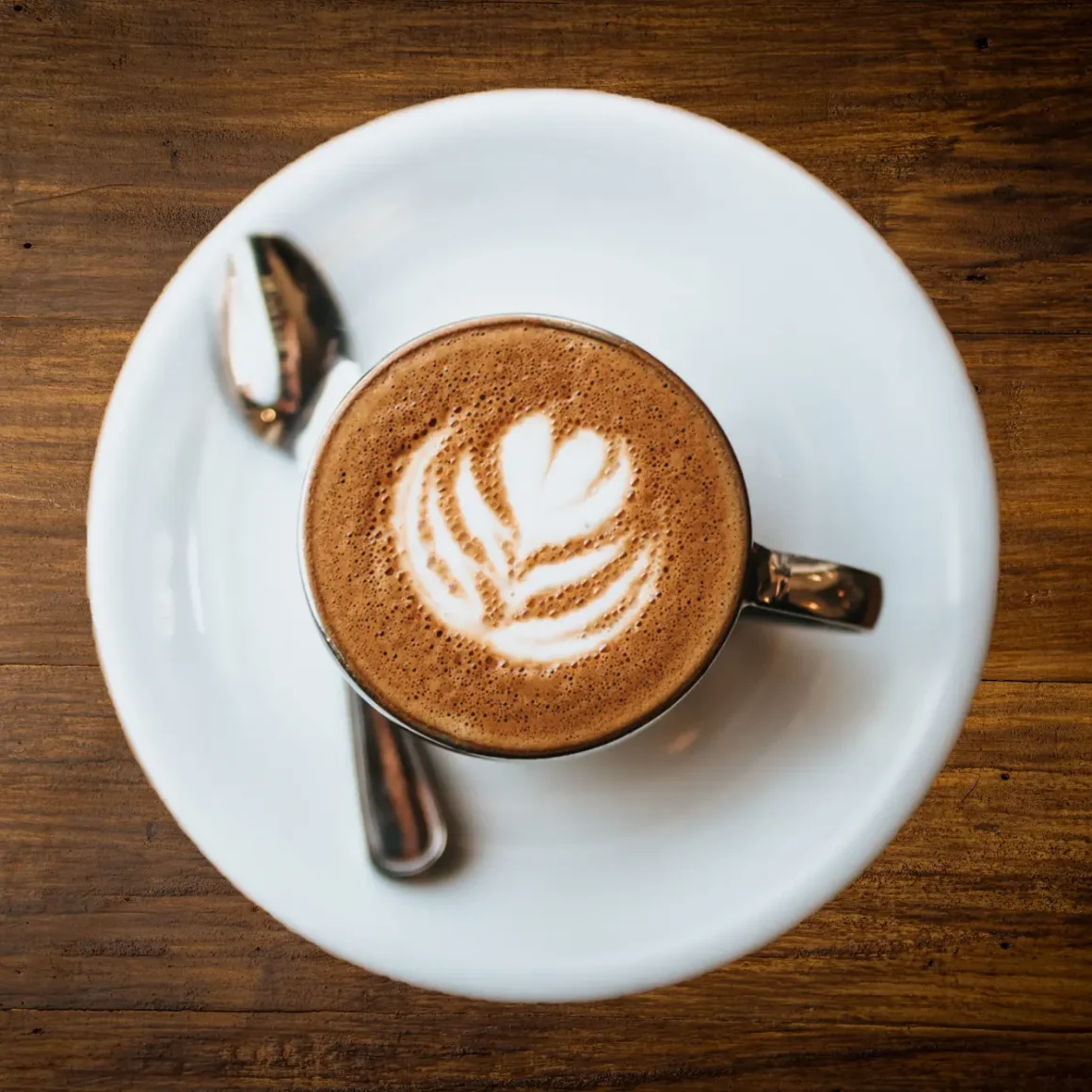
The cappuccino, a harmonious blend of intensity and creaminess, tells a fascinating story rooted in Italian tradition. As a beverage that melds the strength of espresso with the smoothness of milk, it’s no wonder that cappuccino has garnered a global fanbase.
- Origins: The cappuccino, with its name inspired by the Capuchin friars due to the color similarity with their robes, is another gift from Italy to coffee enthusiasts. This drink gained popularity in the 20th century, parallel to advancements in espresso machines that could now steam milk. (2)
- Basics: Wondering how to make a cappuccino? The classic cappuccino is a harmonious trio of equal parts: espresso, steamed milk, and frothy milk foam. Achieving the right balance ensures that each sip offers both the strength of coffee and the creamy richness of milk.
- Taste and Texture: A cappuccino boasts a milder flavor profile compared to a straight espresso, thanks to the addition of milk. The foam on top not only adds aesthetic appeal but also serves as an insulating layer, keeping the drink warmer for longer.
Brewing Methods Compared
When delving into the world of coffee, one quickly realizes that the method of brewing plays a pivotal role in the final taste and texture of the beverage. Among the many brewing techniques, espresso coffee and cappuccino stand out, not just because of their popularity but also due to the specific equipment and processes involved in their creation.
Espresso Coffee:
- Equipment Needed: An espresso machine equipped with a portafilter, tamper, and fine coffee grounds.
- Process: Coffee is finely ground and then tamped into the portafilter. Once secured in the machine, nearly boiling water is pushed through the coffee under high pressure.
Cappuccino:
- Equipment Needed: Besides the equipment needed for brewing this delectable coffee, you’ll require a steam wand, milk jug, and thermometer.
- Process: First, an espresso shot is prepared. Simultaneously, milk is steamed to a silky consistency using the steam wand. This milk is then poured, with the top covered in a thick layer of foam.
Whether you prefer the pure, intense flavor of espresso coffee or the rich, velvety texture of a cappuccino, understanding the brewing methods enhances the coffee-drinking experience.
Flavor Profiles and Variations
When it comes to the age-old debate of espresso vs cappuccino, the distinction often lies in the palate of the drinker and the flavor they’re looking to savor. Both drinks, born from the same coffee bean, offer unique taste profiles and a world of variations that cater to a range of preferences.
Espresso: Bold and Intense
At the heart of many coffee beverages, espresso stands as a concentrated burst of flavor. Created by forcing hot water through the finely ground coffee, an espresso shot captures the essence of the best espresso beans, presenting a rich, bold, and intense flavor in a small serving. The complexity of this beverage’s taste profile can range from slightly sweet to a touch bitter, with hints of caramel, chocolate, and even fruitiness, depending on the bean’s origin and roast level.
Espresso-Based Drinks

With the espresso as a foundation, there are numerous espresso drinks that enthusiasts can explore:
- Americano: Espresso diluted with water, offering a milder taste.
- Latte: Combines espresso with steamed milk, resulting in a creamier texture and milder coffee flavor.
- Macchiato: Simply espresso “stained” or “marked” with a small amount of milk or foam.
- Mocha: Espresso, steamed milk, and chocolate syrup, often topped with whipped cream for a sweet treat.
Cappuccino: A Harmony of Flavors
Cappuccino, a beloved Italian classic, is all about balance. In a traditional cappuccino, the robustness of espresso is mellowed by the creamy presence of steamed milk, and the drink is capped with a layer of airy foam. This tri-layered structure ensures that with every sip, one gets a taste of strong coffee, silky milk, and frothy goodness, creating a harmonious blend of flavors and textures.
Cappuccino Varieties
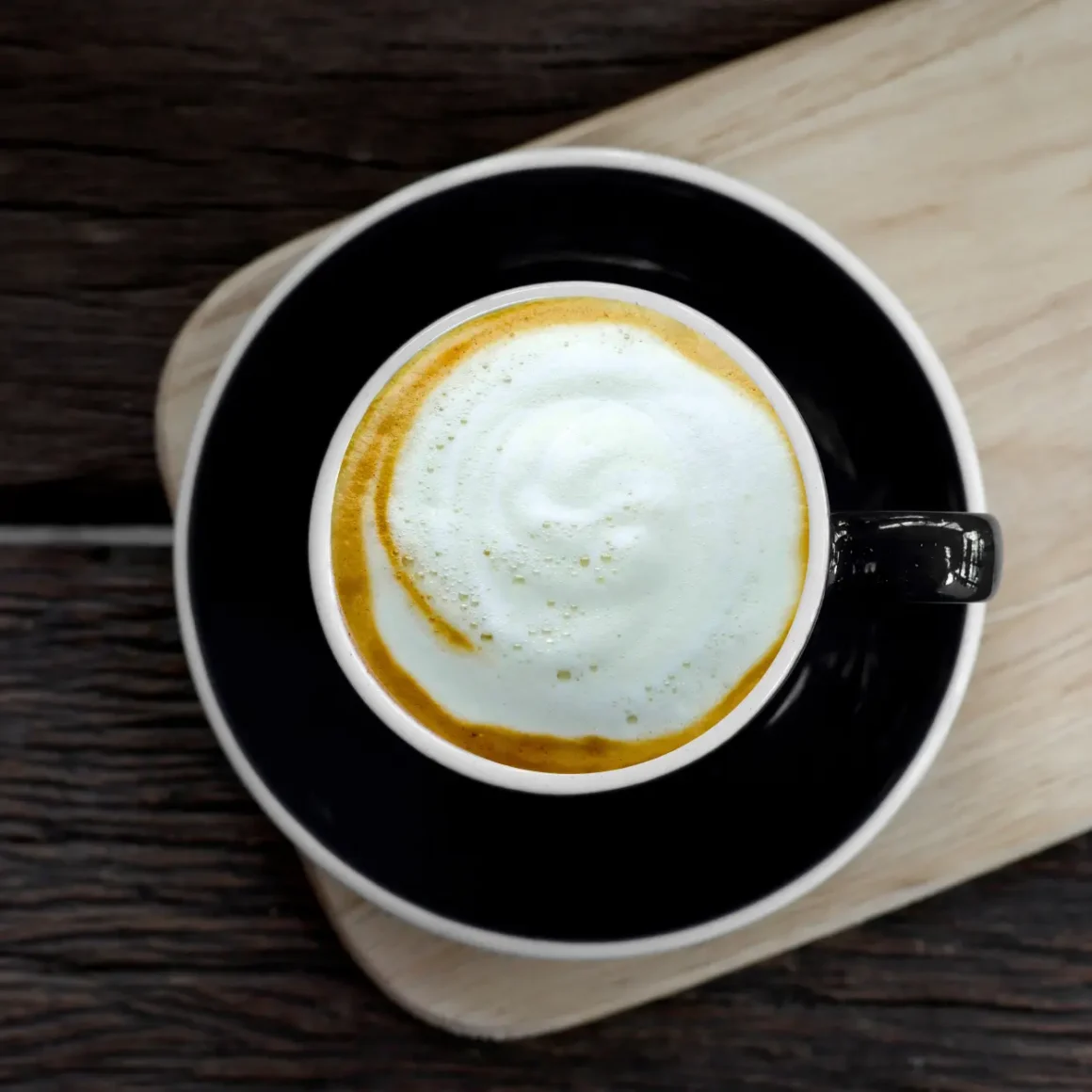
Over the years, cappuccino has witnessed a slew of variations, catering to diverse preferences:
- Dry Cappuccino: Contains more foam and less steamed milk, emphasizing the texture and taste of the foam while still delivering a strong taste profile.
- Bone Dry Cappuccino: Takes the “dry” concept to the extreme, consisting almost entirely of foam with the espresso, making it the frothiest option.
- Iced Cappuccino: A chilled version, perfect for warmer weather, with the same essential components but served over ice.
The Role of Milk and Foam
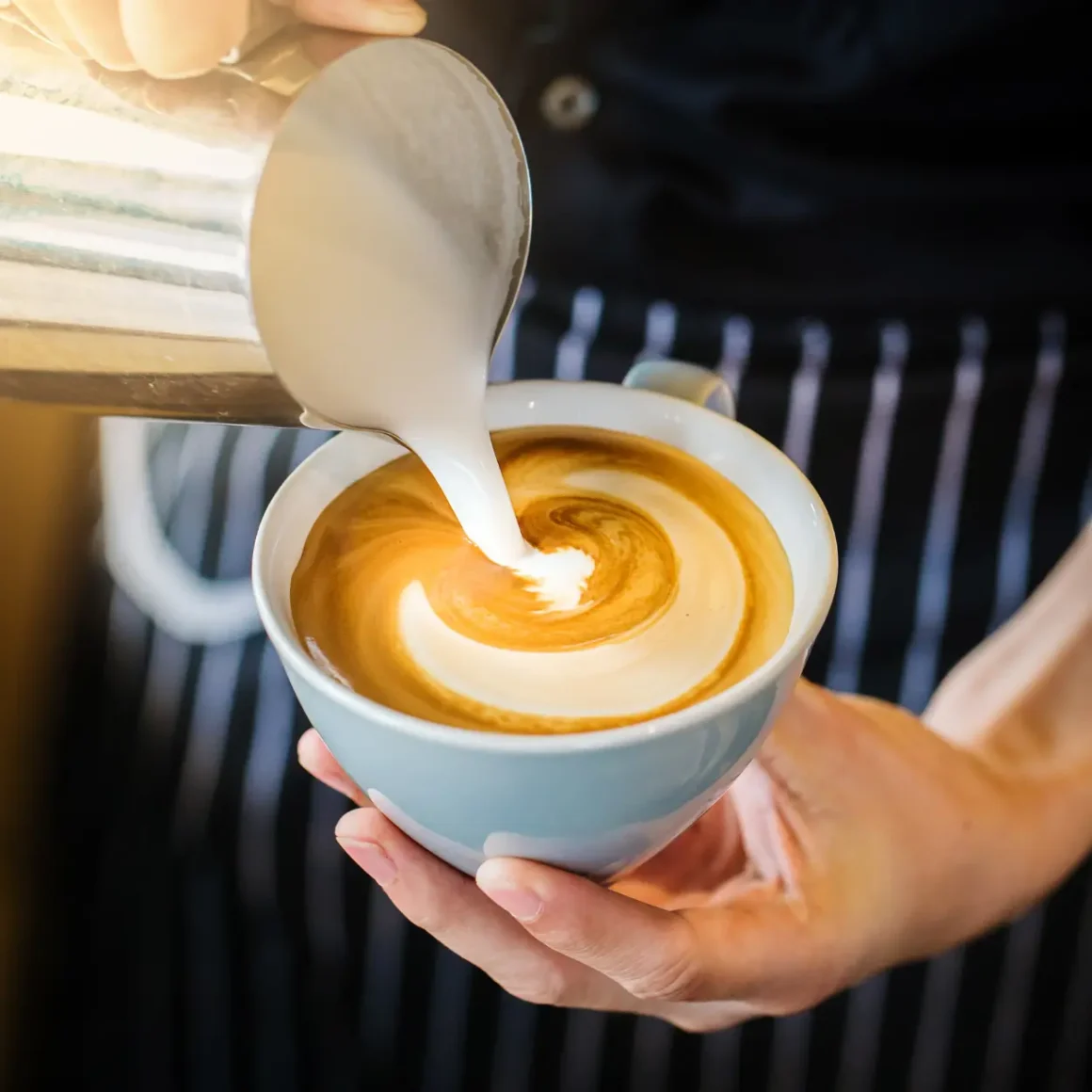
Milk and foam play integral roles in the world of coffee, acting as transformative agents that can turn a simple espresso shot into a myriad of different espresso drinks. Their addition doesn’t just change the taste and texture of the beverage but also the entire coffee experience.
- Milk: The introduction of milk to espresso softens its intense flavor, making it more palatable to those who might find a straight shot too strong. Steamed milk, used in café cappuccino, adds a creamy texture that complements the robust nature of espresso, creating a harmonious balance between the two.
- Foam: Foam acts as the crown of drinks like the cappuccino. It’s essentially aerated milk, holding tiny air bubbles, giving it a light and airy texture. This frothy layer serves multiple purposes in terms of flavor interaction and texture.
Adding Flavors and Syrups
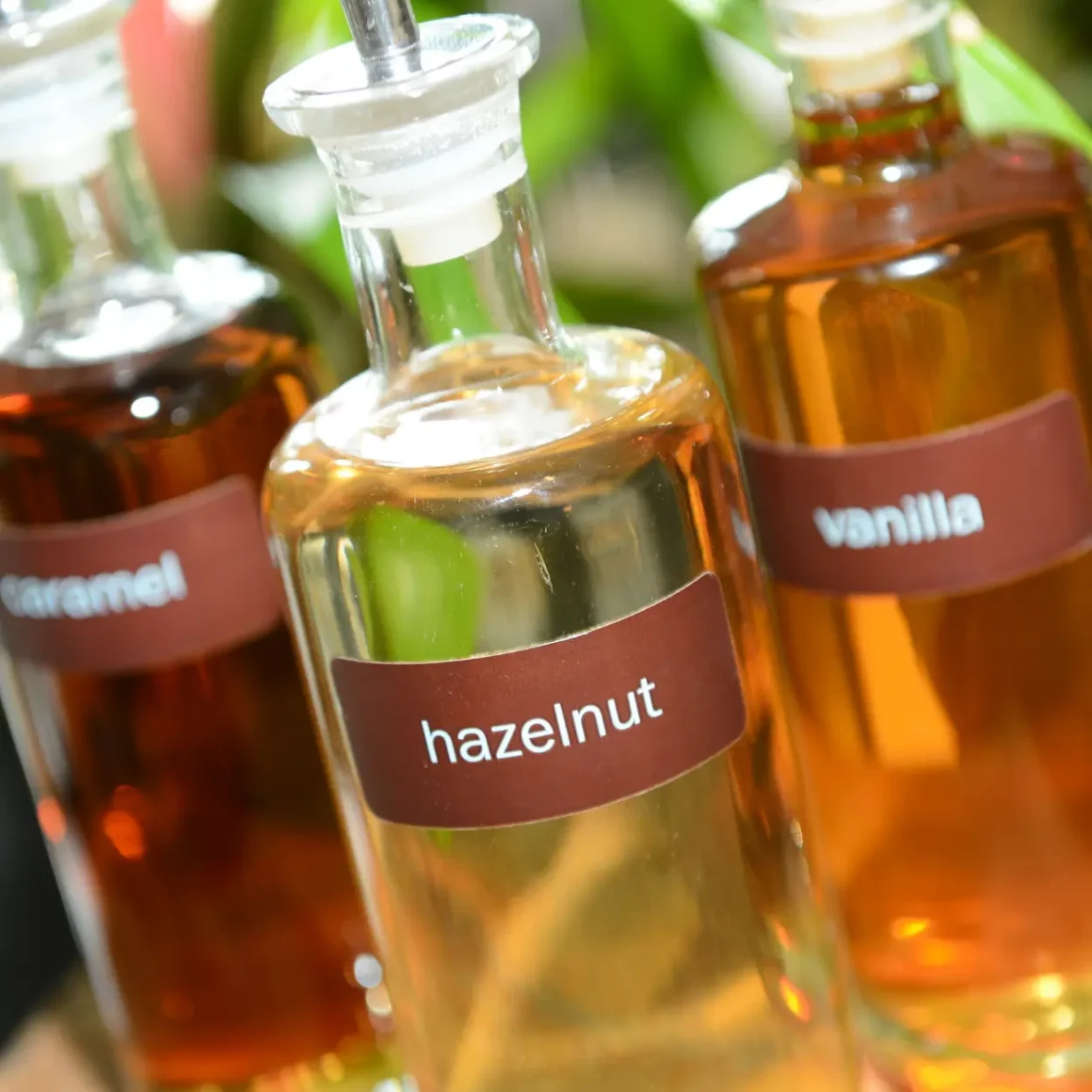
Both beverages, with their distinct and robust profiles, are versatile canvases for the addition of flavors and syrups. These enhancements not only diversify the palette but also cater to a broader range of taste preferences:
Espresso Additions:
- Syrups: Incorporating flavored syrups into this delectable drink can modify its taste from the very first sip. Whether it’s a sweet touch of vanilla or the rich undertones of caramel, these syrups can create a perfect blend of sweetness and the inherent bitterness of espresso. However, due to the concentrated nature of this beverage, it’s essential to ensure that the syrup doesn’t overpower its foundational flavor.
- Natural Flavors: Beyond syrups, natural additives such as a sprinkle of cocoa powder, a dash of cinnamon, or even a zesty twist with a hint of citrus peel can elevate your coffee experience. These natural ingredients intertwine seamlessly with the boldness of espresso, introducing subtle layers of flavor.
Cappuccino Enhancements:
- Blending with Milk: When adding flavors to a cappuccino, it’s beneficial to blend the syrups or flavors with the milk before steaming. This method ensures a uniform taste throughout the drink. Popular syrups for cappuccinos include hazelnut, chocolate, and toffee, which harmonize with the creamy nature of the beverage.
- Toppings and Garnishes: Beyond infusing flavors into the milk, cappuccinos offer the opportunity for garnished creativity atop the foam layer. A dusting of cocoa powder, a sprinkle of spiced cinnamon, or even a drizzle of caramel can make every sip a delightful treat. Moreover, for those with a sweet tooth, whipped cream topped with syrup can provide an extra layer of indulgence.
By tailoring these beverages with various additives, one can personalize their coffee experience, turning a daily ritual into a bespoke treat.
Serving Styles and Presentation
The manner in which coffee is served and presented often carries as much weight as the taste itself. It becomes an experience that engages multiple senses, from sight and smell to taste. This emphasis on aesthetics is particularly evident in how these beverages are served.
Espresso: The Quick Shot
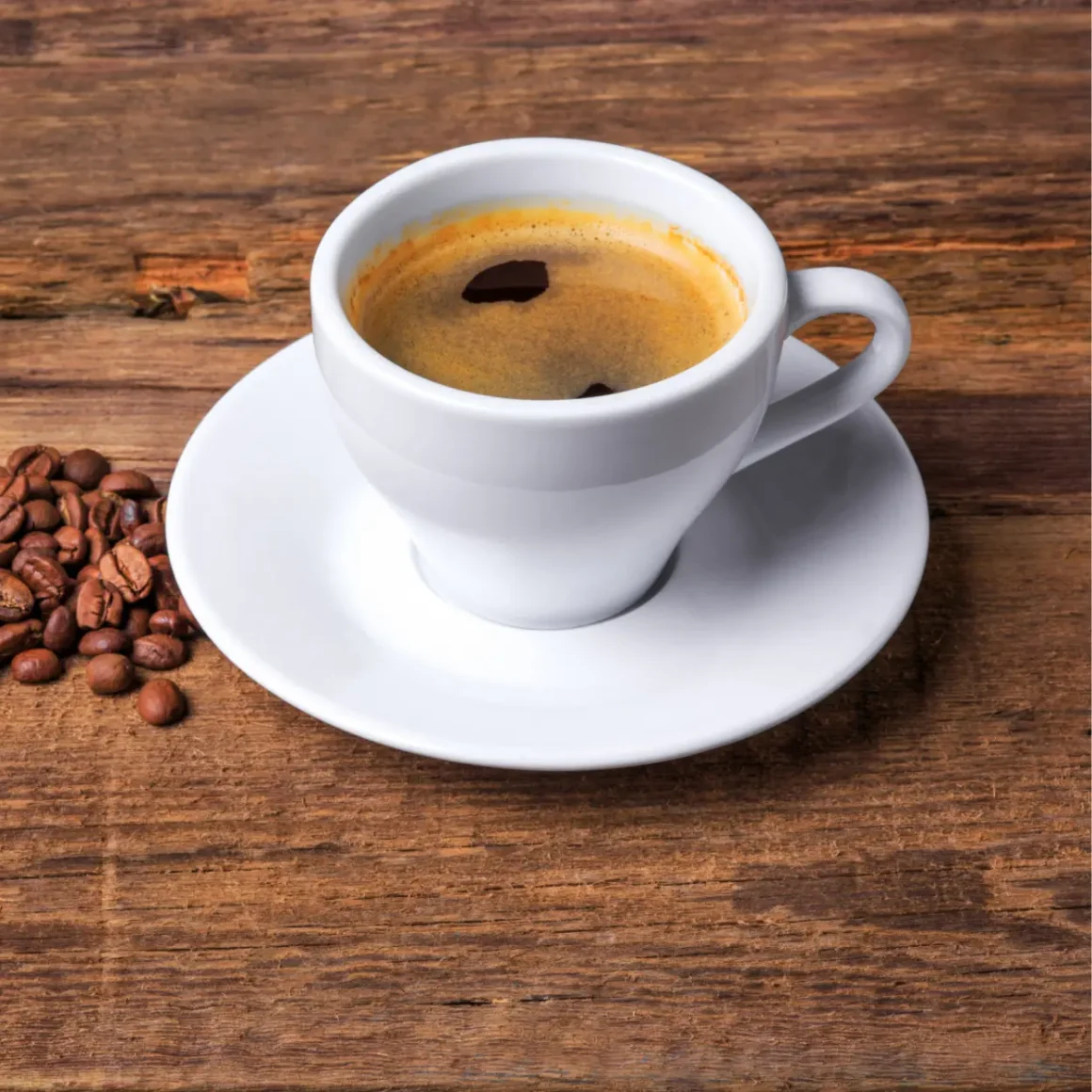
This coffee drink, in its essence, is a concentrated burst of coffee that’s meant to be consumed quickly, providing a rapid injection of flavor and caffeine.
- Presentation: Typically, espresso is served in small, specialized espresso cups also called ‘demitasse cups’ that hold the shot’s heat and showcase its rich crema. The cups are usually white, allowing the deep, rich color of the drink to stand out, emphasizing its purity and intensity.
- Consumption: Understanding how to drink espresso is vital to truly appreciate it. It’s customary to stir the drink briefly before sipping, blending the flavors. Then, it’s consumed in a few quick sips, ensuring that it’s enjoyed while still hot and at its peak flavor.
Cappuccino: An Artful Creation
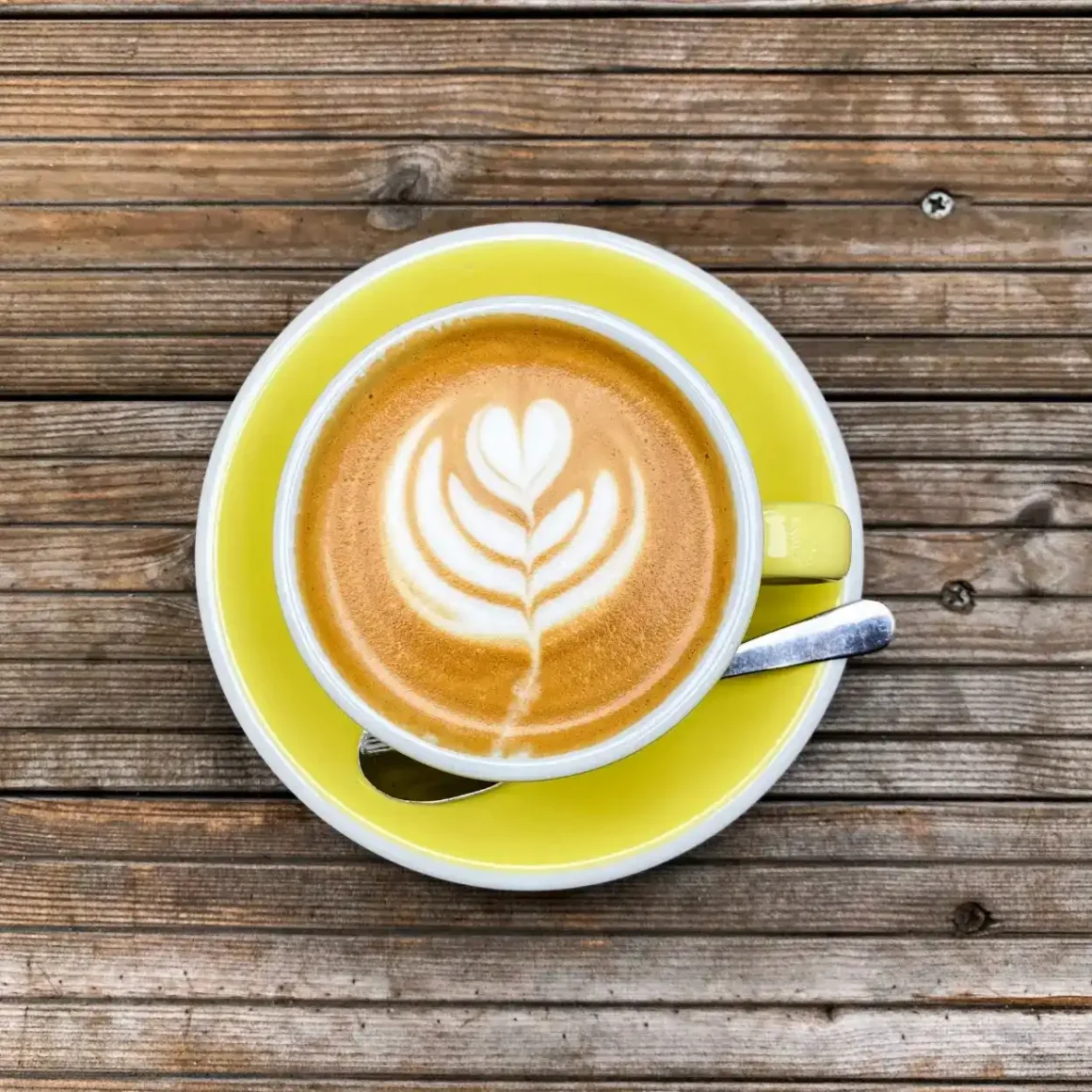
A cappuccino, with its layers of espresso, steamed milk, and foam, is more than just a beverage; it’s often a work of art.
- Presentation: Cappuccinos are traditionally served in larger cups than espressos, allowing room for the milk and foam. The layering effect, with the deep brown espresso at the base, the creamy milk in the middle, and the frothy, airy foam on top, creates a visually appealing gradient. Many baristas further elevate the presentation by crafting latte art on the foam, turning the cappuccino café experience into a visual treat.
- Consumption: The best espresso drinks, like cappuccino, are meant to be savored. When drinking, it’s ideal to sip slowly, relishing the interplay of flavors and textures. Each sip should offer a bit of the espresso, milk, and foam, ensuring a well-rounded taste.
Ideal Occasions for Each
The context in which these beverages are consumed can significantly impact the experience.
- Espresso: Given its quick consumption style, this beverage is perfect for a swift caffeine boost. It’s the choice for busy mornings, short breaks during the day, or as a palate cleanser after a hearty meal.
- Cappuccino: Being a more leisurely drink, a cappuccino is suited for relaxed settings. Whether it’s a quiet morning reading at a cappuccino café, a catch-up with friends, or an evening wind-down, its creamy texture and balanced flavors set the tone for a moment of relaxation.
In essence, while both espresso and cappuccino originate from the same beans, their serving styles, presentation, and ideal consumption occasions distinguish them. Whether you’re in the mood for a swift, intense shot or a creamy, artful creation, there’s a coffee experience tailored for every moment.
Nutritional Aspects and Caffeine Content
Coffee is a universal beverage consumed by millions daily. While many appreciate it for its flavor and energizing effects, it’s essential to understand the nutritional aspects and caffeine content of different coffee variants. Whether you’re sipping on a shot brewed from the best espresso beans or indulging in a creamy café cappuccino, understanding their nutritional profiles can inform healthier choices.
Espresso: The Espresso Shot of Energy
Espresso, with its concentrated brewing process, offers a potent dose of caffeine in a small volume.
- Caffeine Content: A typical shot of espresso contains approximately 63 mg of caffeine, though this can vary based on factors like the type of bean used and the brewing time. Using the best espresso beans can sometimes mean a richer flavor without necessarily a higher caffeine content. (3)
- Calories and Nutrients: A standard shot of this delightful drink is low in calories, generally having only about 5 calories. This low count is because it’s just water and the soluble compounds extracted from the coffee grounds. There’s virtually no fat, carbohydrates, or proteins.
Cappuccino: A Creamier Calorie Count
Cappuccino, being a combination of espresso, steamed milk, and foam, has a different nutritional profile.
- Caffeine Content: The caffeine in a cappuccino primarily comes from the espresso shot used in its preparation. Therefore, a standard cappuccino, which usually contains a single or double shot of espresso, will have caffeine content ranging from 63 mg to 126 mg.
- Calories and Nutrients: A cappuccino derives most of its calories from the milk. Depending on the type of milk used (whole, skimmed, or alternatives like almond or soy), a standard cappuccino can range from 80 to 120 calories. It contains proteins, fats, and carbohydrates from the milk, making it more nutritious but also higher in calories.
Health Benefits and Concerns
While both beverages offer certain health benefits, there are also considerations to keep in mind:
Benefits:
- Antioxidants: Coffee is rich in bioactive compounds, including antioxidants, which help combat oxidative stress in the body.
- Mental Alertness: The caffeine in coffee can help improve concentration, focus, and reduce the feeling of fatigue.
- Metabolism Boost: Caffeine can also aid in enhancing metabolic rate, potentially aiding in weight management.
Concerns:
- Caffeine Sensitivity: Some individuals might be sensitive to caffeine, leading to symptoms like jitteriness, insomnia, or palpitations.
- Bone Health: Excessive coffee consumption can interfere with calcium absorption, potentially impacting bone health.
- Acidity: Both beverages are acidic, which might not be suitable for individuals with conditions like acid reflux or ulcers.
Overall, while the aromatic allure of coffee brewed from the best espresso beans or the creamy texture of a cafe cappuccino can be irresistible, it’s essential to consume them in moderation and be aware of their nutritional profiles.
The Coffee Culture and Trends

From bustling streets of metropolitan cities to quiet corners of quaint towns, coffee culture has woven its way into the social fabric of societies worldwide. The allure of its aroma, the rituals associated with its preparation, and the conversations sparked over its sips have cemented coffee’s place in our daily lives. However, as with any cultural element, coffee too has seen its trends evolve, with different brews gaining prominence at different times.
Espresso: A Global Espresso Revival
Once predominantly an Italian favorite, espresso has seen a global surge in its popularity over recent decades.
- Rise of Specialty Cafes: The growth of specialty coffee shops worldwide has played a pivotal role in introducing this coffee drink to a broader audience. These establishments often emphasize sourcing the best espresso beans, ensuring that the essence of an espresso shot is captured in its most authentic form.
- Innovative Espresso Drink Recipes: With the rising demand for espresso, baristas worldwide have experimented with innovative espresso drink recipes. From classics like Americanos and macchiatos to contemporary creations involving alternative milks or infusions, the versatility of this delicacy has been thoroughly explored and celebrated.
- Fast-Paced Lifestyles: The concentrated nature of this beverage, delivering a quick caffeine hit, aligns well with the fast-paced lifestyles of urban dwellers. It provides an instant boost, making it a favorite for those on the go.
Cappuccino: A Staple in European Cafes
While cappuccino has its roots in Italy, its frothy charm has spread, making it a staple in cafes across Europe and beyond.
- European Breakfast Ritual: In many European countries, mornings are often incomplete without a visit to the local cappuccino café. Paired with a croissant or a pastry, it offers a balanced combination of robust coffee flavor and the creaminess of milk.
- Artistry and Presentation: The layered structure of a cappuccino provides a canvas for baristas. Latte art, which often finds its home atop a cappuccino’s foam, has become a symbol of a barista’s skill and the café’s quality.
- Adaptable Flavor Profile: The cappuccino’s adaptable flavor profile, which can be modified with syrups, spices, or alternative milks, has contributed to its widespread appeal.
Coffee Connoisseurs’ Preferences
For seasoned coffee lovers, the espresso vs cappuccino debate is an exploration of profound flavors and cherished rituals.
Espresso: The Coffee Essence
- Intensity: This drink offers an undiluted taste, highlighting every aspect of the bean’s character, from its acidity to aftertaste.
- Bean Assessment: In an espresso, the bean’s quality shines without interference. It’s the benchmark for evaluating bean character without the influence of additives or milk.
- Simplicity: Espresso’s minimalistic approach is revered by many. It’s about experiencing coffee in its purest form, with water and finely ground beans at its heart.
Cappuccino: The Balanced Brew
- Flavor Harmony: Cappuccinos meld the robustness of espresso with milk’s creaminess. This creates a harmonious balance that appeals to many.
- Artistry: Crafting the perfect cappuccino is an art. From achieving velvety milk to pouring it so there’s a clear distinction between milk and foam, the process is deeply appreciated.
- Versatility: Cappuccinos offer a canvas for innovation. From flavor infusions to alternative milks, this drink is loved by those who enjoy a personalized coffee experience.
In essence, the espresso vs cappuccino conversation isn’t about superiority but about individual preferences. Both drinks cater to different coffee philosophies, representing the vast and diverse world of coffee culture.
Conclusion
In the grand tapestry of coffee culture, the cappuccino vs espresso debate stands out as a testament to the beverage’s rich history and the passionate enthusiasts who cherish it. While each has its unique attributes and fervent followers, it’s essential to recognize that these two iconic drinks represent different facets of the same gem. Whether you’re drawn to the bold intensity of espresso or the harmonious blend of cappuccino, both contribute to the diverse and vibrant world of coffee. As we close this exploration, may we continue to relish the nuances, traditions, and experiences that each brew offers, celebrating the shared love that unites all coffee aficionados.
Curious about how the Espresso or Cappuccino matches up with other coffee drinks? Be sure to explore our other comparison guides:
FAQs
How does the caffeine content vary between Espresso and Cappuccino?
Both contain espresso; however, a cappuccino has diluted caffeine content due to the addition of milk.
What is the significance of milk froth in Cappuccino?
Milk froth adds texture, creaminess, and visual appeal, creating a balanced flavor profile in cappuccino.
Are there any health benefits associated with drinking Espresso or Cappuccino?
Both can boost alertness and provide antioxidants, though excessive consumption might lead to caffeine-related side effects.
How do cultural differences influence the choice between Espresso and Cappuccino?
Cultural traditions, coffee rituals, and regional preferences shape an individual's inclination towards either beverage.




